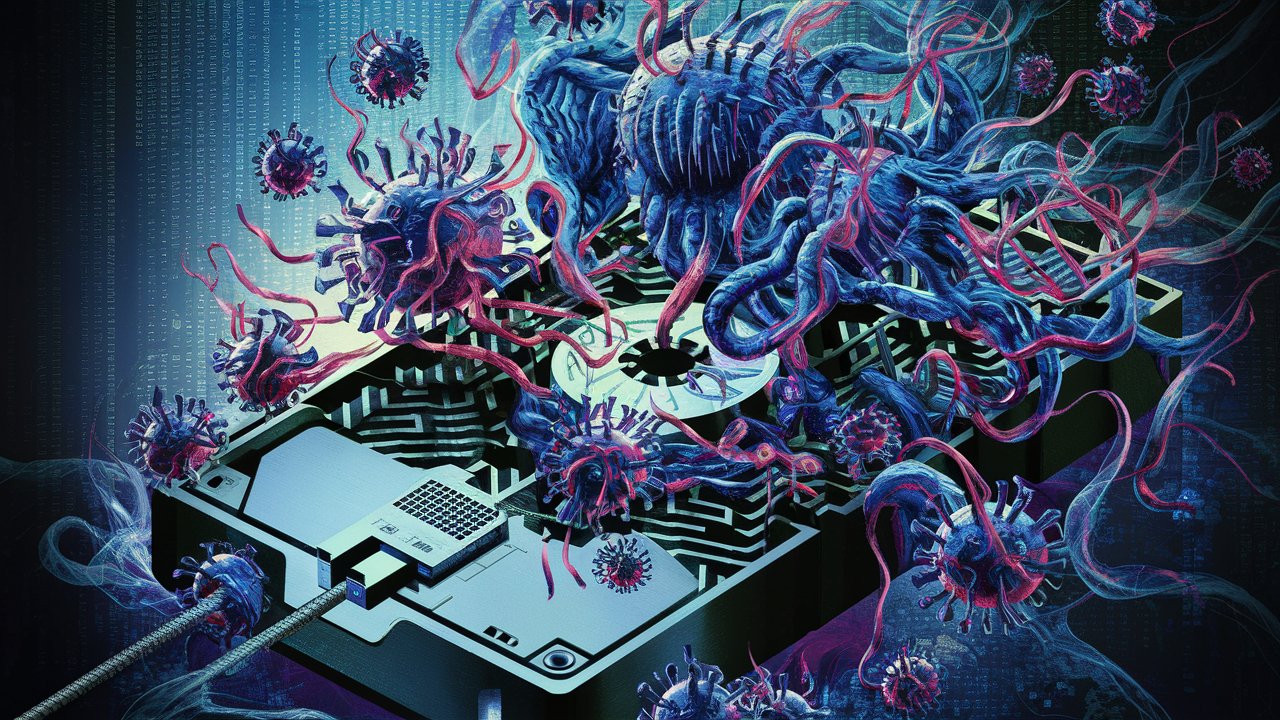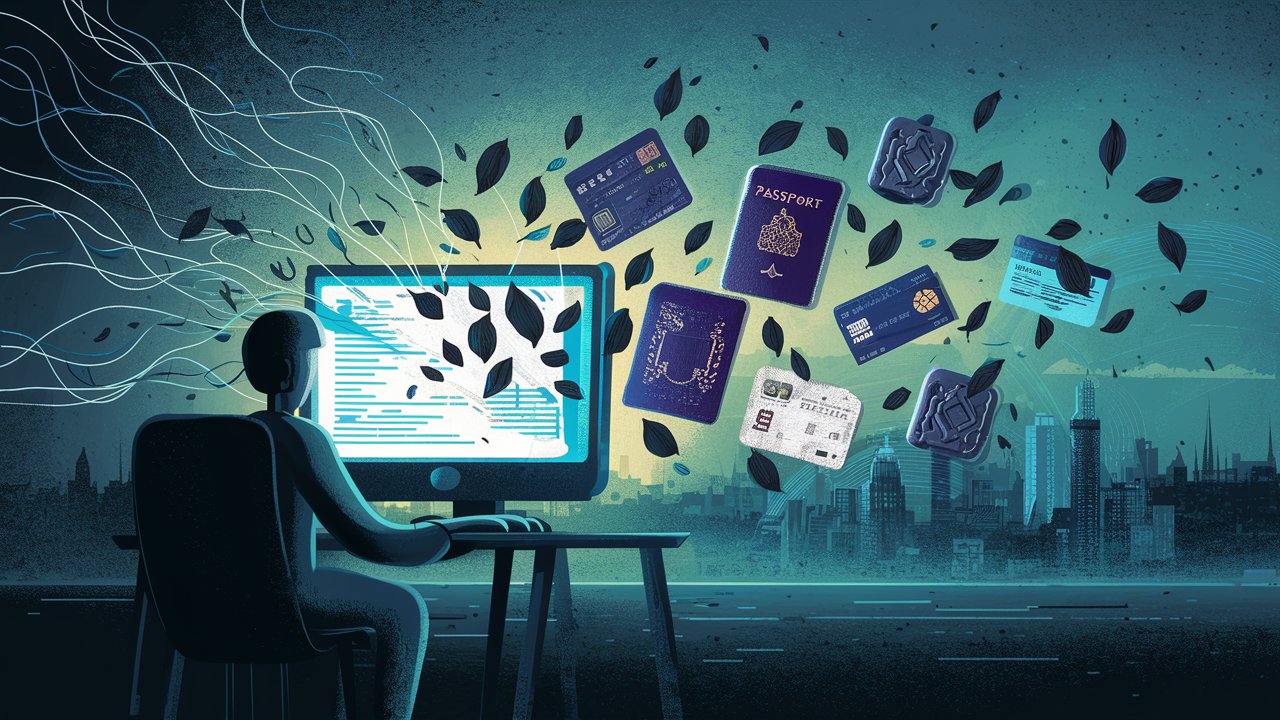Intro
Viruses and malware risks to hard drive data are becoming increasingly prevalent in today's digital landscape. These malicious entities can cause havoc on your computer system, compromising the integrity of your valuable data. In this blog post, we will delve into the dangers posed by viruses and malware to hard drive data and explore their impact on data integrity.

Understanding the Basics of Viruses and Malware
At the heart of digital peril, viruses and malware stand as powerful adversaries. These insidious software entities are engineered with the sole purpose of breaching the sanctity of computer systems. Their modes of entry are as varied as the digital world itself, weaving through the fabric of our online interactions with deceptive ease. Whether it's the seemingly innocuous email attachment, the dangerous landscape of infected websites, or the Trojan horse of removable storage devices, these digital malefactors find their way into the system's core.
Once inside, the true havoc begins. Viruses, similar to their biological counterparts, possess the unsettling ability to replicate, spreading their corruption across the system. Malware, a broader term that encompasses various forms of malicious software, including viruses, worms, and ransomware, proceeds to execute its sinister agenda. This may manifest as the corruption of critical files, the taking of sensitive information, or the outright hijacking of system resources. The endgame? To leave the hard drive—a repository of invaluable data—compromised, if not entirely inoperative.
What makes viruses and malware particularly threatening is their changing nature. They continually evolve, adapting to avoid the latest defenses erected by cybersecurity professionals. This relentless progression underscores the imperative need for vigilance and proactive defense strategies to protect our digital domains from these common threats. As we journey deeper into the complexities of digital security, understanding the mechanics of these threats is not just beneficial; it's essential for safeguarding the sanctity of our digital lives.

The Mechanics of How Viruses and Malware Affect Hard Drives
Examining the minute details of how malware and viruses affect hard drives negatively reveals a multifaceted web of processes intended to disrupt, degrade, or destroy data integrity. Once these malicious programs get past a system's digital defenses, they start a sequence of actions that can modify the basic structure of data storage and retrieval procedures. They can subtly change data blocks or file properties, making the files useless or unavailable. This data transformation from usefulness to obsolescence is more than a minor inconvenience—it's a direct attack on the digital life archive stored on a hard drive.
Furthermore, a maze of system errors may result from the existence of these digital marauders. They start unauthorized changes to system setups and settings by deftly integrating themselves into the operating system. This can lead to abnormal system behavior, each symptom a reflection of the chaos caused beneath the surface, ranging from the system's inability to start up to its slowness in processing tasks.
In the darkest scenarios, viruses and malware employ a more sinister tactic: the encryption of data. This form of digital hostage-taking encrypts files, essentially locking away precious data behind a cryptic barrier only accessible through a key held by the attacker. This action not only denies access to critical data but also positions the perpetrator to levy ransom demands, exploiting the desperation for data recovery.
The mechanics of how viruses and malware affect hard drives illuminate a battleground within our computers, a continuous conflict between the preservation of data integrity and the forces that seek to undermine it.

The Most Common Data Integrity Threats From Viruses and Malware
The danger of data corruption looms enormous, casting lengthy shadows over the sanctity of hard drive data amid the digital turmoil caused by viruses and malware. This evil force harms data integrity, the vital component of our digital archives, with devious precision. The process of corruption is both complex and evil; files that were once valuable repositories of knowledge are twisted into unintelligible tangles of digital trash. These cyber predators are not limited to corrupting individual files; they can also create backdoors in systems. These covert channels act as a pathway for cybercriminals, providing them with unrestricted access to the safes of confidential information embedded in hard drives.
This malicious action lays the groundwork for a cascade of negative events, each of which increases the vulnerability of the digital ecosystem—a compromised file, a falling piece, or a penetrated piece of personal data. In this situation, malware and viruses don't just cause havoc; they also weaken the fundamental principles that support data integrity. They put our digital archives to the test, raising concerns about the security and veracity of every byte kept inside the hard drive.
about this digital harm, maintaining the trust and dependability that support our digital interactions and transactions is just as important as fighting the current threat. Recognizing and assessing these typical hazards as we travel this digital minefield is the first step in strengthening our defenses and protecting the cornerstone of our digital existence.

Real-World Consequences of Data Integrity Breaches
Navigating through the aftermath of data integrity breaches unveils a landscape marred by a multitude of challenges, both tangible and intangible. Individuals find themselves grappling with the erosion of personal privacy, as sensitive information—ranging from financial data to intimate correspondences—becomes fodder for exploitation. The implications extend beyond the immediate distress, potentially catalyzing identity theft and financial fraud, shadows that may loom long after the initial breach.
For businesses, the ramifications are equally daunting. A single incident can dismantle the trust meticulously built with clients, partners, and stakeholders. The ripple effects of such breaches are not confined to reputational damage alone; they often carry significant financial burdens. Regulatory fines, legal fees, and the costs associated with remediation efforts can swiftly accumulate, undermining the financial stability of the affected enterprise.
Moreover, the operational disruption cannot be understated. Critical systems may become inoperable, halting business processes and eroding the competitive edge in an already ruthless market. The quest for recovery is not merely about retrieving lost data; it's about reinstating operational integrity and regaining stakeholder confidence.
In the broader societal context, these breaches can undermine the very fabric of digital trust, casting a long shadow over our collective faith in the security of online spaces. This erosion of trust challenges the foundation upon which the digital economy stands, necessitating a reevaluation of how we protect and value our digital selves and assets.
Best Practices for Protecting Hard Drive Data Against Viruses and Malware
To forge an impenetrable shield around hard drive data in the face of viruses and malware, a multi-faceted cybersecurity strategy is non-negotiable. The cornerstone of this fortress begins with the deployment of cutting-edge antivirus software, an unyielding guardian against online thieves' intrusions. Yet, the installation of such software is but the first step in a comprehensive defense. Regular updates are the lifeblood of cybersecurity tools, ensuring that defenses remain impervious to the ever-evolving arsenal of threats.
Making the right decisions is crucial in the world of technology, where scammers may pose as legitimate communications or alluring downloads. This watchfulness includes clicking on links with caution and carefully reviewing files before downloading them; these precautions serve as a vital barrier to prevent unwanted visitors from entering the private areas of our websites.
Data backup emerges as a critical ally in this battle, serving as a failsafe that preserves the integrity of data in the face of potential compromise. By anchoring data in the secure harbors of external storage or the cloud, one ensures a redundancy that can mean the difference between a mere inconvenience and a catastrophic loss.
The fight for digital integrity is never-ending, necessitating constant vigilance that changes to counter the attacks it faces. We strengthen our defenses and make sure that our hard drive data is protected from viruses and malware by integrating these techniques into our daily digital lives.

Future-Proofing: Staying One Step Ahead of the Threat
In the dynamic battlefield of digital security, the mantra for enduring safety is foresight and proactive adaptation. The landscape of cyber threats, marked by its constant evolution, demands a vigilant and informed approach to protecting our hard drive data. Educating oneself and others on the details of safe digital practices forms the bedrock of this strategy. It's about cultivating a culture of security mindfulness, where the understanding of potential hazards steers us away from risky digital behaviors.
Equally critical is the commitment to adopting and maintaining multi-layered security measures. This strategy transcends the mere installation of antivirus software to encompass a holistic view of digital hygiene, including the regular auditing of system vulnerabilities and the employment of sophisticated encryption methods for sensitive data. In essence, future-proofing against viruses and malware is an ongoing attempt, a never-ending cycle of learning, implementing, and enhancing our defenses to not just react to the threats of today but to preempt those of tomorrow.